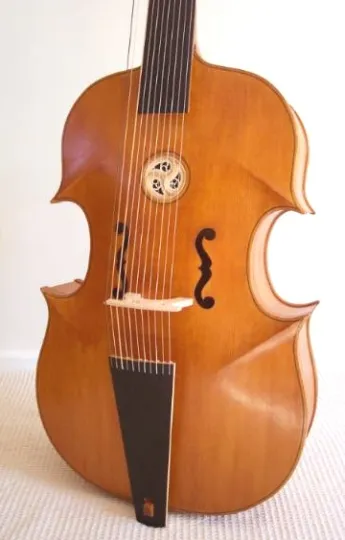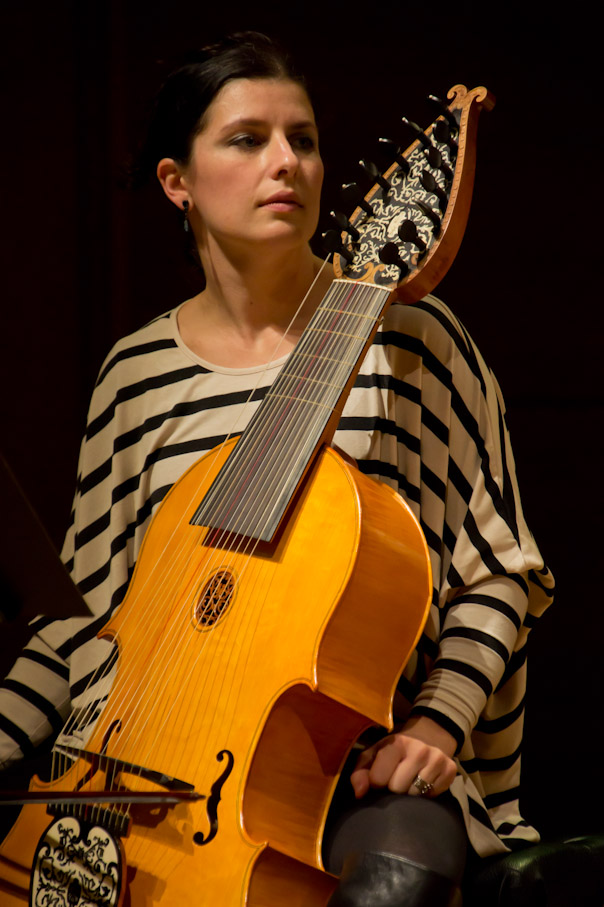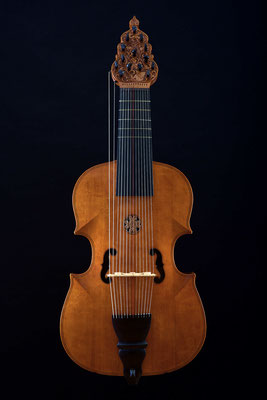Lirione (Lira Da Gamba)
Bowed Instruments
Europe
Between 1001 and 1900 AD
Video
Lirone Overview
The lirone, also known as the lira da gamba, is a bowed string instrument that served as the bass member of the lira family. This instrument was particularly popular during the late 16th and early 17th centuries in Italy, where it played a vital role in the accompaniment of vocal music in operas and oratorios. The lirone is characterized by its between 9 and 16 gut strings, fretted neck, and unique tuning system. It was especially favored for its ability to produce rich, resonant harmonies that complemented the human voice, often in the portrayal of divine or mythological figures in Baroque performances.
Historical Context
The lirone was most prominently used in Italy during the late Renaissance and early Baroque periods, particularly in the works of composers such as Claudio Monteverdi. It was frequently employed in Catholic churches by Jesuits and other religious orders to accompany vocal music. The instrument’s ability to play full, rich chords made it an ideal choice for providing continuo, the harmonic foundation in ensemble settings. Despite its technical imperfections, the lirone was valued for its unique sound, which was integral to the musical aesthetics of the time.
Construction and Design
The lirone is essentially a larger version of the lira da braccio. It features a wide fingerboard, a flat bridge, and a leaf-shaped pegbox with frontal pegs. The instrument is typically held between the legs, similar to a cello or viola da gamba. The flat bridge design allows for the simultaneous playing of three to five notes, enabling the performer to create rich, textured harmonies. The body of the lirone is often elaborately decorated, reflecting its importance in both religious and secular settings during its peak usage.
Tuning and Playing Technique
The tuning of the lirone is as follows: G-g (off the fingerboard), c-c´-g-d´-a-e´-b-f#´-c#´. This tuning system allows the instrument to produce a wide range of pitches, making it versatile in its harmonic contributions. The string length is typically around 55 cm, though variations exist depending on the specific instrument and player preferences. The lirone’s unique tuning and design make it particularly suited for the polyphonic music of the Renaissance and Baroque periods.
Modern Performers
Although the lirone fell out of general use as musical styles evolved, there has been a resurgence in interest in Baroque music and instruments during the 20th and 21st centuries. Today, only a handful of musicians play the lirone, including notable performers such as Erin Headley (England), Imke David (Germany), Claas Harders (Germany), Hille Perl (Germany), Annalisa Pappano (United States), Laura Vaughan (Australia), and Paulina van Laarhoven (Netherlands). These musicians have contributed to a renewed appreciation of the lirone and its unique role in early music.
FAQ
- What is the lirone?
- The lirone, also known as the lira da gamba, is a bass bowed string instrument from the lira family. It has between 9 and 16 gut strings and was popular during the late 16th and early 17th centuries, especially in Italian operas and oratorios.
- How is the lirone played?
- The lirone is played by holding it between the legs, similar to a cello or viola da gamba. It is bowed, and its flat bridge allows the musician to play chords of three to five notes, making it ideal for providing continuo or harmonic accompaniment.
- What is the historical significance of the lirone?
- The lirone was primarily used in Italy during the late Renaissance and early Baroque periods. It was particularly associated with the music of Claudio Monteverdi and was frequently used in Catholic churches to accompany vocal music, especially in works involving divine or mythological themes.
- What is the tuning of the lirone?
- The lirone is typically tuned as follows: G-g (off the fingerboard), c-c´-g-d´-a-e´-b-f#´-c#´. The instrument has a string length of approximately 55 cm, and variations in tuning and decoration are possible depending on the number of strings and the player's preferences.
- Who are some notable performers of the lirone?
- Notable modern performers of the lirone include Erin Headley (England), Imke David (Germany), Claas Harders (Germany), Hille Perl (Germany), Annalisa Pappano (United States), Laura Vaughan (Australia), and Paulina van Laarhoven (Netherlands).
Other Instrument
Categories





















